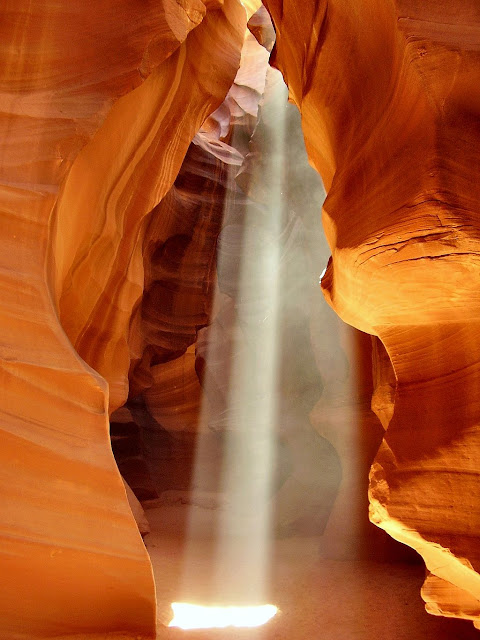Day 38 (D-23) Our 4th state: Arizona / Kayenta
Monument Valley is located in the two states, Utah and Arizona. However, it is not a National Park. The Navajo Nation's governing body, the Tribal Council, objected to maki it a national park; it wanted to protect the valley's Indian residents and preserve scarce grazing land. In 1958, the council voted to set aside 29,817 acres of Monument Valley as the first-ever tribal park, to be run by the Navajo on the national park model.
Read more:
https://www.smithsonianmag.com/travel/behind-the-scenes-in-monument-valley-4791660/#aoTI3eXuzKwxtbhj.99
Read more:
https://www.smithsonianmag.com/travel/behind-the-scenes-in-monument-valley-4791660/#aoTI3eXuzKwxtbhj.99
___________________________________________________________
Arizona will be our fourth state to visit. It's called The Copper State and it has two other nicknames but you'll need to wait until the end of this post to learn those names. Phoenix is the capital and we already saw that this state has a population of over 7 million.
The flag of Arizona
It's interesting to read that the name "Arizona" could come from the Spanish language (Arizonac, "small spring"), but there is another possible origin: the Basque phrase haritz ona ("the good oak") because there were numerous Basque sheepherders in the area in the early 18th century.
Arizona is the last of the contiguous states to be admitted to the Union. It became a state on February 14, 1912. It's the sixth largest state and ranks 14 in population. About one quarter of the state is made up of Indian Reservations that serve as the home of 27 federally recognised Native American tribes, including the Navajo Nation and the Hopi. It's also interesting to note that although the federal law gave all Native Americans the right to vote in 1924, Arizona excluded those living on reservations in the state from voting until the State Supreme Court decision in 1948.
(There are the European elections today.)
(There are the European elections today.)
What can you find in Arizona? A desert climate, but also forests of pine, Douglas fir and spruce trees; the Colorado Plateau; mountain ranges; deep canyons; significant winter snowfalls; ski resorts in the various areas of Flagstaff, Alpine and Tucson; AND THE GRAND CANYON NATIONAL PARK.
That's where we'll be going on the 9th day of our trip, June 26th. But first, after our visit to Monument Valley, we'll spend the night in Kayenta, Arizona and visit Lake Powell and Antelope Canyon the following day. Be patient, that information will come on the next pages of this blog!
Kayenta is the gateway to Monument Valley Navajo Tribal Park. We'll also be having our lunch there on June 26th. In Navajo, the town is called Tó Dínéeshzheeʼ . Kayenta is a US census-designated place (CDP) which is a part of the Navajo Nation and is in Navajo County, Arizona. The population was 5,189 (2010) with 92% being Native American. Kayenta is located 25 miles (40 km) south of Monument Valley. Like other places on the Navajo Nation, it is illegal to serve alcohol. Arizona does not observe Daylight Time, however, the Navajo reservation does. So we'll often be wondering what time it is on this 10th day of our trip!
My best,
Jane
*Women obtained the right to vote in the United States in 1920.
PS. I didn't forget! Do you want to know the other two nicknames for the state of Arizona?
*Women obtained the right to vote in the United States in 1920.
PS. I didn't forget! Do you want to know the other two nicknames for the state of Arizona?
The Valentine State!!!
AND... THE GRAND CANYON STATE!
________________
--scarce = rare
--grazing land = pâturage
--scarce = rare
--grazing land = pâturage
--contiguous = You remember this vocabulary from Day 9 of the blog!
--gateway = the entrance
--CDP = a concentration of population defined by the United States Census Bureau for statistical purposes only...CDPs include small rural communities, colonies located along the U.S. border with Mexico, and unincorporated resort and retirement communities and their environs. Here, because Kayenta is a part of the Navajo Nation.
--gateway = the entrance
--CDP = a concentration of population defined by the United States Census Bureau for statistical purposes only...CDPs include small rural communities, colonies located along the U.S. border with Mexico, and unincorporated resort and retirement communities and their environs. Here, because Kayenta is a part of the Navajo Nation.




Comments
Post a Comment